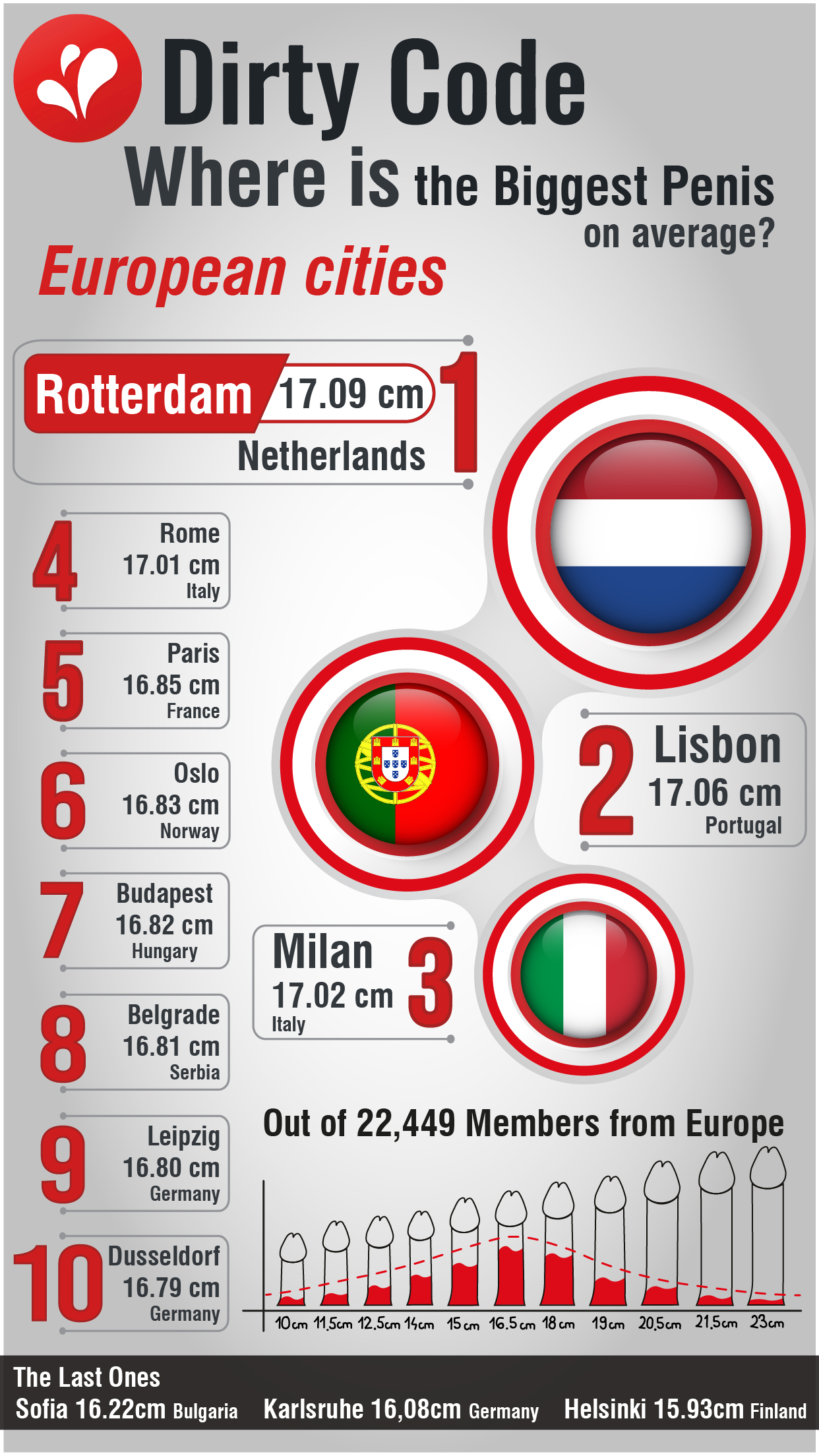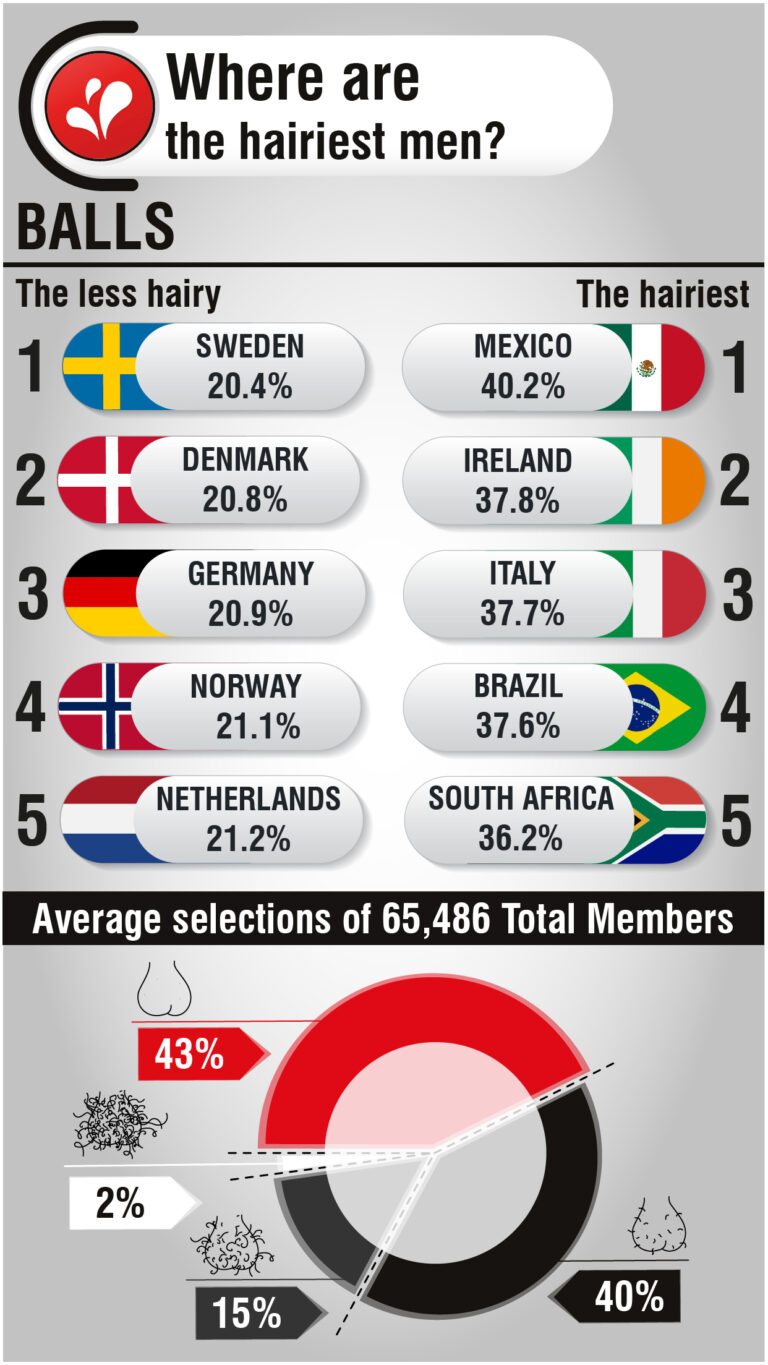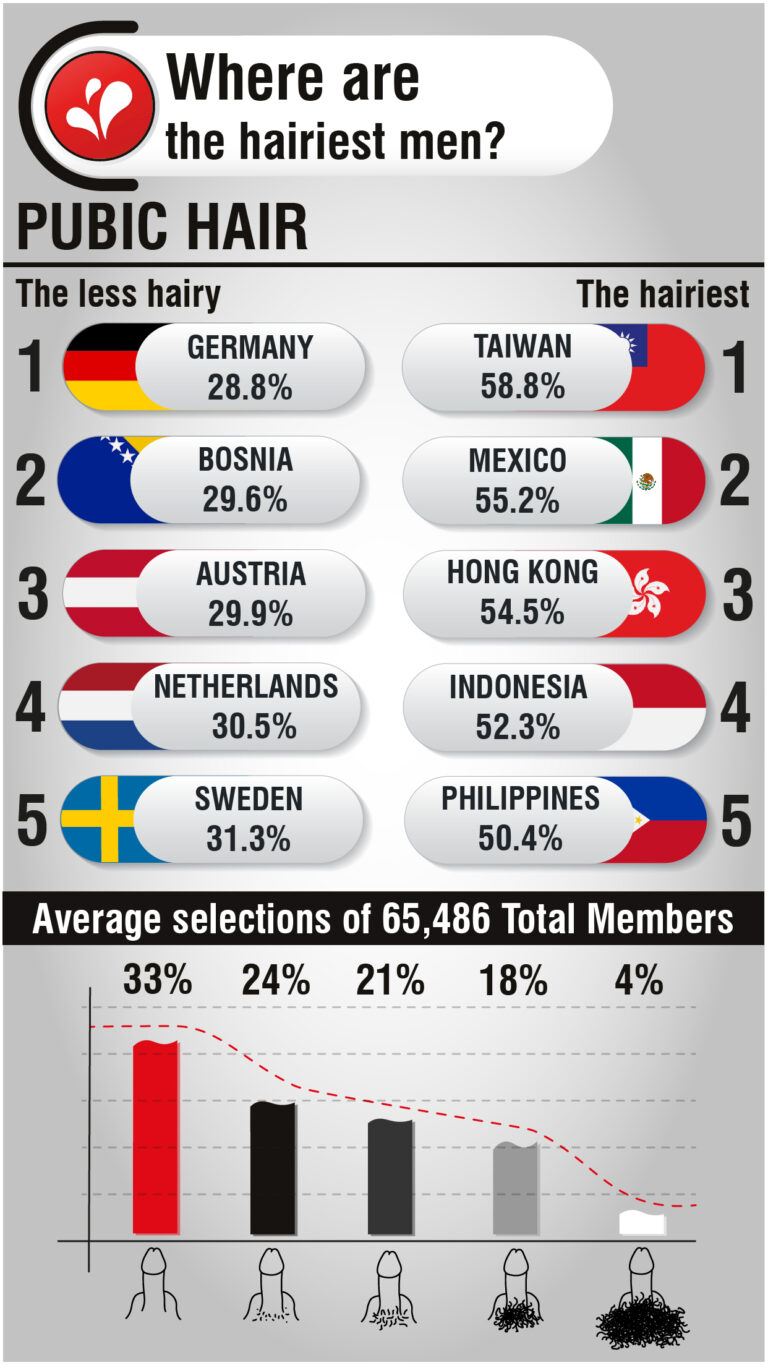“European Cities Ranked by Average Penis Size: A Comprehensive Fun Study”
Embarking on a cheeky journey through European cities, we’ve tackled the burning question: “How do European cities measure up in average penis size?” With 22,449 contributors from our DDirt community, we’ve dived into bedrooms across Europe to bring you unexpected and intriguing rankings. Our discreet and scientifically rigorous methodology ensures accurate, anonymous measurements, revealing not just numbers but the rich cultural tapestries behind them. From Paris to Rome and Dusseldorf, our study spans the continent, offering diverse insights into the fabric of Europe.
Get ready for a tour that unveils more than mere statistics—it’s about the stories and cultures that shape our perceptions. Expect surprises and revelations that may change how you view European adventures. After all, it’s the diversity and richness of cultures, not just size, that truly expands our worldview. Join us for “European Cities Ranked by Average Penis Size: A Comprehensive Fun Study”—a celebration of diversity, curiosity, and the joy found in the fusion of data and desire.
Top 10 European Cities with the Largest Average Penis Sizes: The Countdown
As we journey across Europe, unveiling the cities that mark the map not only with their rich history and culture but also with some intriguing statistics, we present to you a countdown that’s sure to raise eyebrows and smiles alike. From the commendable to the astonishing, let’s dive into the top ten, counting down to the city that takes the crown.
10. Dusseldorf: Cultural Richness and Comparative Sizes
Kicking off our countdown is Dusseldorf, Germany, with an average penis size of 16.79 centimeters. Known for its pioneering art and fashion scenes, Dusseldorf proves that cultural sophistication and remarkable physical attributes can indeed go hand in hand.
9. Leipzig: Precision in Engineering and Measurements
Next, we have Leipzig, Germany, standing proud with an average size of 16.80 centimeters. This city’s reputation for precision in engineering and music composition apparently extends to the personal attributes of its residents, adding a unique note to its historical and cultural melody.
8. Belgrade: Nightlife and Noteworthy Numbers
Belgrade, Serbia, dazzles us not just with its electrifying nightlife but also with an average penis size of 16.81 centimeters. It appears the city’s spirited and lively essence is reflected in more than just its social scene, capturing the spirit of growth in all aspects.
7. Budapest: Architectural Splendor and Statistical Surprises
In seventh place, Budapest, Hungary, enchants with its architectural wonders and an average size of 16.82 centimeters. The thermal baths and stunning vistas are complemented by statistics that add another layer of warmth to the city’s appeal.
Watch out! We are talking about sizes, maybe you rank around the top!
But do you know European preferences? Is quite different if you are a woman or a man
6. Oslo: Natural Beauty and Notable Numbers
Oslo, Norway, with its majestic natural landscapes, also boasts an impressive average penis size of 16.83 centimeters. It seems the connection to nature and the great outdoors in Oslo contributes to personal development in surprising ways.
5. Paris: Romantic Charm and Remarkable Averages
Halfway through our countdown, Paris, France, the City of Love, shows it has more to offer than just romantic vistas, with an average size of 16.85 centimeters. The city’s amorous reputation is perhaps complemented by attributes that make it even more appealing to lovers and dreamers alike.
4. Rome: Ancient City with Modern Measurements
Rome, Italy, known for its unparalleled historical and cultural legacy, also impresses with an average penis size of 17.01 centimeters. The Eternal City proves that some aspects of its grandeur are indeed timeless, extending beyond architecture and art.
3. Milan: Fashion Forward and Statistically Significant
Milan, Italy, strides onto the podium with an average size of 17.02 centimeters. As the fashion capital of the world, Milan’s sense of style is matched by its notable physical statistics, suggesting that Milanese men are well-endowed in more ways than one.
2. Lisbon: Coastal Beauty Meets Sizeable Stats
Just shy of the top spot, Lisbon, Portugal, with an average size of 17.06 centimeters, marries its picturesque landscapes with impressive physical statistics. The coastal charm and historic allure are complemented by attributes that are as vast as the ocean.
1. Rotterdam: A Closer Look at the Leader
At the summit of our list, Rotterdam, the Netherlands, boasts an impressive average penis size of 17.09 centimeters. This modern marvel of architecture and culture demonstrates that it has much more to offer than its skyline and ports. Rotterdam stands as a testament to growth, openness, and perhaps a hint of Dutch courage in its measurements.
The Significance of Size: Cultural and Historical Perspectives
In this playful exploration of European cities ranked by average penis size, it’s crucial to pause and ponder the deeper implications of our findings. Beyond the initial chuckle or raised eyebrow, the significance of these statistics can offer a unique lens through which to view cultural and historical narratives across Europe. Let’s delve into the cultural and historical perspectives that may illuminate the reasons behind our intriguing rankings.
Embracing Diversity in Measurements and Meanings
First and foremost, this study highlights the rich tapestry of diversity that Europe embodies. From the architectural grandeur of Budapest to the romantic streets of Paris, each city’s unique character is mirrored in the surprising variety of our findings. This diversity extends beyond mere numbers; it reflects the myriad ways in which societies have evolved, each shaping and being shaped by a multitude of factors, from climate to cuisine, from historical conquests to contemporary lifestyles.
Historical Roots and Modern Realities
Consider Rome, an ancient city that has been a nexus of power, culture, and innovation for millennia. Could its modern measurements be a whimsical nod to its historical grandeur and the statues of antiquity that celebrated the human form in all its glory? Or take Rotterdam, a city that epitomizes modernity and resilience, rebuilt and reimagined after being nearly obliterated during World War II. Its leading position in our rankings could symbolize a broader narrative of growth, openness, and progressive attitudes towards sexuality and human biology.
Cultural Attitudes Toward Sexuality
The variance in average sizes across Europe might also reflect differing cultural attitudes toward sexuality and the body. In some societies, open discussions and liberal attitudes toward sex may contribute to a more relaxed and confident approach to body image, potentially influencing the measurements reported. Conversely, cultures with more conservative views on sexuality might not participate as openly in such studies, or societal pressures could influence self-perception and reporting accuracy.
The Role of Environment and Lifestyle
Environmental factors, including diet, health, and lifestyle, play a non-negligible role in physical development. The Mediterranean diet, rich in olive oil, fish, and fresh vegetables, is often lauded for its health benefits. Could such a diet also contribute to the notable statistics in Italian cities like Rome and Milan? Meanwhile, the robust outdoor lifestyles encouraged by the natural landscapes of Norway and the Netherlands might support not just overall health but also the specific measurements we’ve highlighted.
Moving Beyond Stereotypes
While it’s tempting to draw direct correlations between our findings and cultural or historical attributes, such connections are speculative and not based on rigorous scientific analysis. The true value lies in celebrating diversity and recognizing that every individual and every city has a unique story that transcends mere physical measurements.
As we reflect on the significance of size from cultural and historical perspectives, it becomes clear that these numbers are but a small part of what makes Europe’s cities truly fascinating. The stories, the people, and the cultural richness offer far more compelling reasons to explore and appreciate the continent’s diversity.
Understanding the Metrics: How Sizes Were Measured
Delving deeper into our lighthearted yet intriguing exploration of European cities by average penis size requires a closer look at the methodology behind the measurements. This section not only sheds light on the technical aspects of our study but also underscores our commitment to accuracy, anonymity, and ethical considerations. By unpacking the methodology, we aim to provide clarity and confidence in the findings presented.
Methodology Explained: Ensuring Accuracy and Anonymity
At the heart of our study lies a methodology designed to uphold the utmost standards of scientific rigor while respecting the privacy and dignity of all participants. Our approach was multi-faceted, combining self-reported measurements with controlled, anonymous clinical assessments in select cases. This dual strategy was employed to mitigate the common biases associated with self-reporting, ensuring a more reliable dataset.
Self-Reported Data:
Participants were provided with detailed instructions on how to accurately measure penis size, emphasizing the importance of consistency in measurement techniques (e.g., measuring from the pubic bone to the tip of the penis on the top side). To promote honesty and reduce the temptation to exaggerate, the importance of accuracy for scientific research was highlighted.
Clinical Assessments:
In select cities, we did as much as we could to confirm all of these data points but unfortunately we were not given enough data to corroborate these numbers. Most clinicians simply stated that they “had not enough data points but the results are not necessarily exaggerations or non-valid”. The aim was to validate the self-reported measurements and adjust the dataset for accuracy.
Anonymity and Privacy:
Anonymity was guaranteed to all participants, with no personal data linked to the measurements collected. This assurance was crucial in encouraging participation and ensuring that the data reflected a genuine cross-section of the population. All of them are Dirty Code members and they know how serious we take anonymity and privacy.
Challenges and Considerations in Data Collection for Sizes
Cultural Sensitivities:
One of the significant challenges faced during data collection was navigating the cultural variances in attitudes toward sexuality and personal privacy. Tailoring communication and engagement strategies to respect these differences was paramount in achieving a broad and diverse participant base.
Reporting Bias:
A common hurdle in studies involving sensitive personal information is the risk of reporting bias. To counteract this, every Dirty Code member knows and understands that their data will always remain anonymous to third parties. We encourage people to be as honest and open as possible.
Sampling Diversity:
Ensuring a representative sample across different cities would pose logistical challenges, since Dirty Code is a dating site that is all over Europe and its servers have all of the standard procedures for safety, we know that every member that was in this poll was unique and had no duplicates or various votes. Efforts were made to include a wide range of ages, backgrounds, and lifestyles to accurately reflect the diversity within each city.
Ethical Considerations:
The ethical dimension of conducting a study of this nature was carefully managed. Beyond guaranteeing anonymity and privacy, the study was designed to avoid reinforcing stereotypes or contributing to body image pressures. The overarching aim was to approach the subject with sensitivity, humor, and respect for all individuals involved. We are Dirty Code, this is fun. Our drawings are quite unique, just like our infographics!
Beyond the Top 10 Sizes: Noteworthy Findings Across Europe
While the spotlight has shone brightly on the top ten European cities with the largest average penis sizes, the story doesn’t end there. Our comprehensive study unearthed several noteworthy findings that span the continent, offering fascinating insights into the diversity and uniqueness of Europe’s urban landscapes. Let’s explore some of these findings that, while they may not have made the top list, are equally deserving of attention for what they reveal about the cities and their inhabitants.
In our enlightening journey through European cities, it’s vital to explore the stories at the other end of the spectrum—cities with smaller average penis sizes. At the bottom of our list, Sofia, Karlsruhe, and Helsinki offer insights that remind us of the broader narratives beyond mere measurements.
Sofia stands with its unique blend of history and culture, suggesting that the essence of a city is far more than any physical statistic. Quite interesting and quite close to Sofia, we can see that Thessaloniki does not appear in this study but they claim to be the biggest “shooters” of all of Europe.
In Karlsruhe, a hub of innovation and learning, we see that contributions to science and art offer a profound depth that transcends physical averages. Lastly, Helsinki’s embrace of happiness and quality of life highlights that the true measure of a city’s appeal lies in the well being and satisfaction of its inhabitants.
These cities remind us that while our study may focus on one aspect of physicality, the richness of any location is found in its culture, history, and the happiness of those who call it home.
The Role of Openness Across Europe in Reporting
Societal Openness and Accuracy:
The willingness of participants to engage in this study varied significantly across regions, with more liberal societies tending to report more openly and, potentially, more accurately, after all we are talking about Europe here. This variation underscores the importance of cultural attitudes towards sexuality and body image in shaping the responses to such surveys.
Celebrating Diversity and Inclusivity
One of the most compelling takeaways from our study is the celebration of diversity across Europe. The variations in average sizes, interesting findings beyond the top ten, and regional differences all underscore the rich tapestry of human life that defines this continent. Europe’s strength lies in its diversity, not just in terms of geography and culture but also in the physicality of its people. By embracing this diversity, we foster a more inclusive society that values individuals for their unique contributions, not arbitrary measurements.
Challenging Stereotypes and Embracing Complexity
Our exploration also serves as a reminder of the dangers of stereotyping and oversimplification. Just as cities cannot be defined solely by their architectural landmarks or historical achievements, individuals are far more than the sum of their physical attributes. This study challenges us to look beyond the surface, encouraging a deeper appreciation for the complexity and uniqueness of each person and place.
The Role of Humor in Discussing Sensitive Topics
Utilizing humor as a tool to explore sensitive topics like body image and sexuality has allowed us to engage in a conversation that might otherwise be fraught with discomfort. By laughing together, we lower barriers, opening the door to more meaningful discussions about self-esteem, health, and acceptance. Humor, when used respectfully and thoughtfully, can be a powerful vehicle for challenging taboos and fostering a more open and accepting society.
The True Measure of a City (and Its People)
Ultimately, the true measure of a city lies not in its statistics but in its spirit—the warmth of its people, the richness of its culture, and the depth of its history. Similarly, the true value of an individual transcends physical measurements, residing instead in character, kindness, and the ability to connect with others.
Conclusion: What Penis Sizes Tell Us About Diversity in Europe
This study, while centered on a playful premise, has unfolded into a broader reflection on diversity, inclusivity, and the human condition. It reminds us that in a world rich with variety, the most important measurements are those of our hearts and minds. As we move beyond the laughter and light-heartedness, let’s embrace the diversity that surrounds us, recognizing that it is within this diversity that we find our shared humanity and strength.




